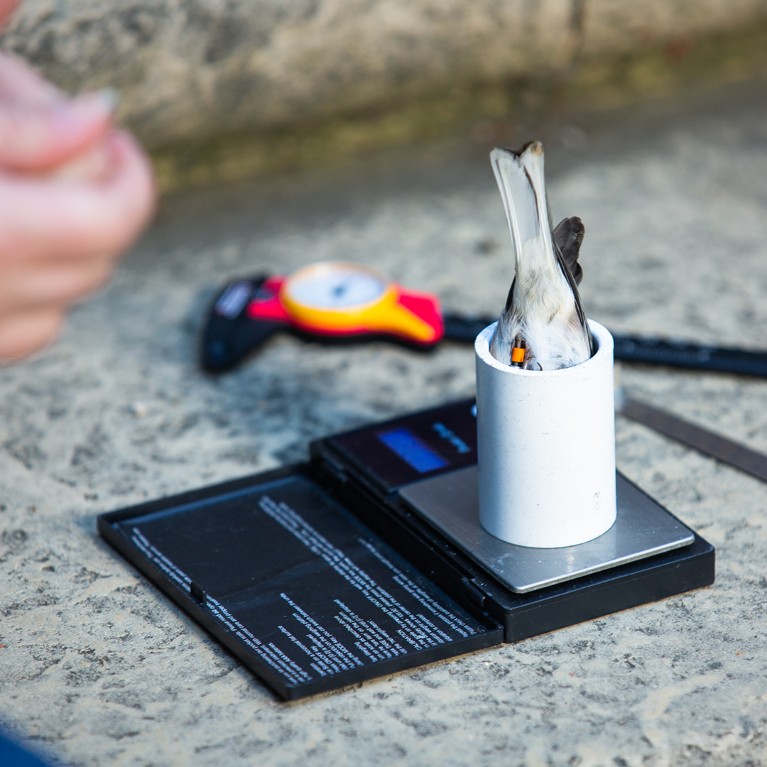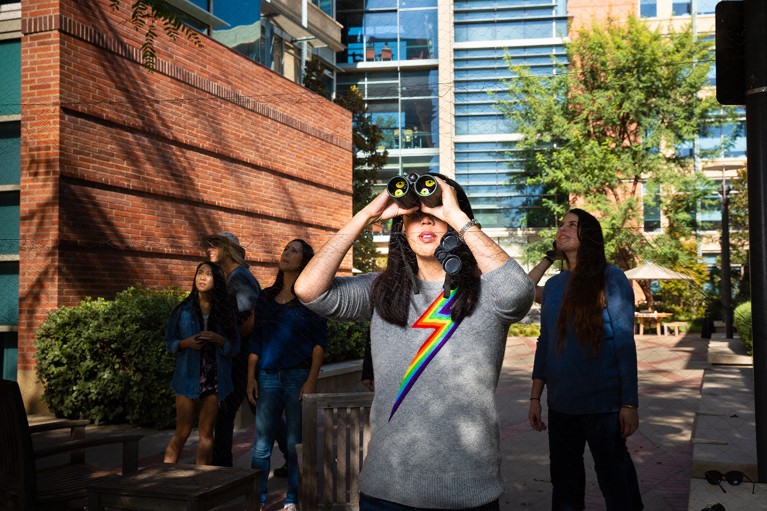As an evolutionary biologist, my main interest is in understanding how birds and bacteria evolve when they encounter unfamiliar environments. For the past 22 years, I have studied the dark-eyed junco (Junco hyemalis), a sparrow with white outer tail feathers. I’m especially interested in a population that has settled at the campus of the University of California, Los Angeles (UCLA). These birds had migrated 70 kilometres from the Angeles National Forest or the woodlands of California’s Santa Monica Mountains.
Most of my work is done here on the campus of UCLA, where I am in this picture. I also go with my students into the Californian mountains to see how juncos’ appearance and behaviour vary between their natural and their city habitats. There is something so joyful, so wondrous, about going into the on-campus ‘field’ to study birds — sometimes I feel I know a little secret about the natural world, right here. It makes my heart sing.
Juncos are unusual in that, even in urban settings, they build their nests on the ground. When I see small shrubs or dense ground cover in some place where people won’t tread, I always think, ‘Oh, that’d be a good place to put a nest.’ If I see a tall tree with branches jutting out, I think that’d be a good place for a junco to sing.
When this photo was taken, my students and I had put up a ‘mist net’ of fine polyester mesh to capture a junco, and we were trying to lure it by loudly playing recordings of other juncos advertising themselves, attracting mates or defending their territory. In my research, I’ve found that city juncos are less aggressive and fearful of humans than are mountain juncos. They also have shorter tails and wings, and less white in their tail feathers, and they breed more often.
It’s amazing that I can walk from one building to another and see our birds. It’s a reminder that nature isn’t something we go to — it’s where we are. For me, that’s very inspiring.

A dark-eyed junco being weighed: “We have a digital scale,” says Pamela Yeh. “We’ve put a bird head-first in the cup, and it’s dark in there, so he doesn’t move very much.”


 A quest to save frogs
A quest to save frogs
 How female scientists can confront gender bias in the workplace
How female scientists can confront gender bias in the workplace







